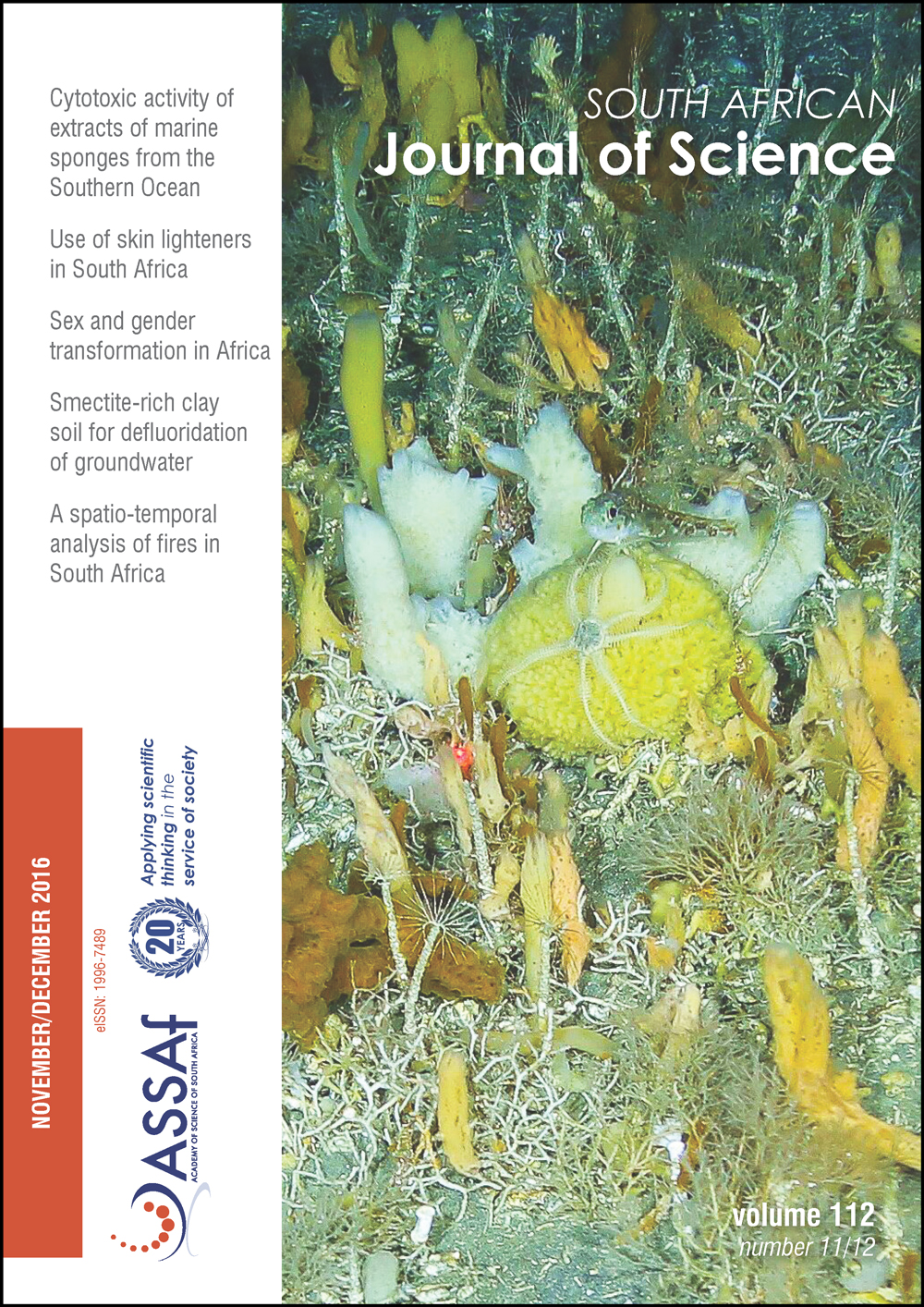The phenomenon of skin lightening: Is it right to be light?
DOI:
https://doi.org/10.17159/sajs.2016/20160056Keywords:
skin lighteners, Africa, colourism, exogenous ochronosis, hydroquinoneAbstract
Chemicals capable of lightening the skin – variously known as skin-bleaching, skin-lightening, depigmenting, skin-evening and skin-brightening agents – are among the most commonly used skin preparations in the world. Globally, Africa reportedly exhibits a high prevalence of skin lightener use. In this review, we provide both clinical and social perspectives on skin lightener use in Africa, with particular emphasis on South Africa. We narratively explore the timeline associated with skin lightener use in South Africa and attempt to interweave the social rhetoric of this specific paradigm. Despite the risks associated with exposing the skin to known constituents of these formulations, such as hydroquinone and mercury, chronic use continues. In spite of legislation banning hydroquinone and mercury in cosmetics in South Africa, these ingredients are present in widely available products. We recommend better implementation of policies and greater ethical responsibility of multinational cosmetic companies in addition to the initiation of a system of random product testing and penalties that could improve industry compliance.
Significance:- There is a high prevalence of skin lightener use in Africa.
- Despite legislation banning harmful compounds, these compounds are still used in skin lightening formulations.
- There is an urgent need to implement policies and recommendations for preventing the influx and illicit sale and use of untested skin lighteners.
Published
Issue
Section
License

All articles are published under a Creative Commons Attribution 4.0 International Licence
Copyright is retained by the authors. Readers are welcome to reproduce, share and adapt the content without permission provided the source is attributed.
Disclaimer: The publisher and editors accept no responsibility for statements made by the authors
How to Cite
- Abstract 2185
- PDF 3848
- EPUB 240
- XML 286













.png)